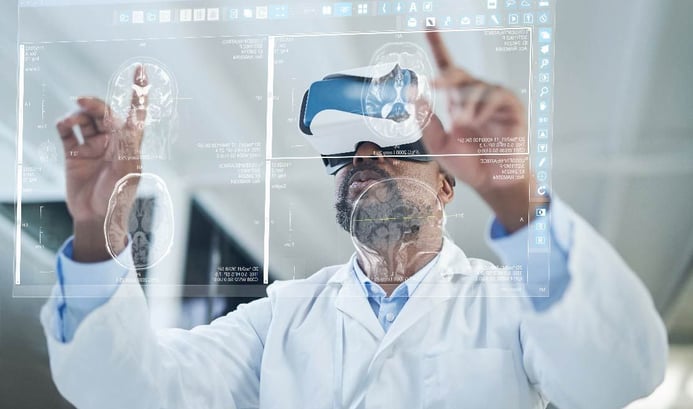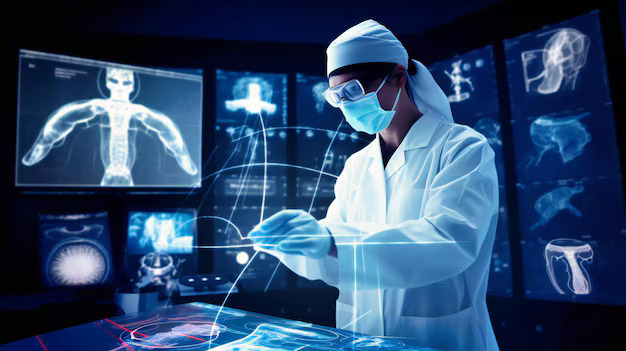The Future of X-Ray Technology: Innovations and Trends You Need to Know
X-ray technology has been a cornerstone of medical imaging for over a century, playing a crucial role in diagnosing a wide variety of health conditions. However, like all technology, X-ray systems are constantly evolving. Today, we find ourselves in a phase where innovations are making X-rays safer, faster, and more accurate. These breakthroughs are not only improving patient care but also revolutionizing the way healthcare professionals use imaging for diagnosis and treatment planning. In this blog, we’ll explore some of the most exciting innovations and trends in X-ray technology that are shaping the future of healthcare. Whether you're a healthcare professional, technician, or someone with a keen interest in medical technology, these advancements are ones to watch.
3/18/20254 min read


1. Digital X-Ray Systems: The Game-Changer
One of the biggest transformations in the world of X-ray technology has been the shift from traditional film-based X-rays to digital systems. This transition is not just a technological upgrade; it’s a game-changer for the entire medical imaging field.
Advantages of Digital X-Ray Systems:
Speed: Digital X-rays provide instant results, which can be viewed on computer screens within seconds, reducing waiting times for patients.
Improved Image Quality: With digital systems, radiologists can enhance and manipulate images, improving clarity and detail for more accurate diagnoses.
Lower Radiation Exposure: Compared to traditional X-rays, digital systems require less radiation to produce high-quality images, reducing risks to patients.
Easier Storage and Sharing: Digital images are easier to store electronically and can be quickly shared across different healthcare facilities, streamlining the diagnosis process.
Digital X-ray systems have become the standard in hospitals and clinics worldwide, and their adoption is expected to continue to grow.
2. 3D X-Ray Imaging: A New Era of Precision
While traditional 2D X-ray images have been useful for diagnosing fractures, infections, and tumors, they can sometimes fall short in providing a complete view of the body. Enter 3D X-ray imaging — a major innovation that’s revolutionizing fields like orthopedics, dentistry, and even oncology.
How 3D X-ray Works:
3D X-ray imaging uses a series of 2D X-ray images taken from multiple angles, which are then reconstructed into a 3D model. This allows doctors to view the body from all angles and make more accurate diagnoses.
Benefits of 3D X-ray Imaging:
More Detailed Imaging: The 3D perspective provides a clearer and more accurate view of the area being examined, making it easier to identify subtle abnormalities.
Improved Surgical Planning: Surgeons can plan more precise procedures with 3D models, particularly in complex surgeries like dental implants or joint replacements.
Better Patient Outcomes: With more precise imaging, patients can receive better-targeted treatments, leading to quicker recovery times and fewer complications.
3D imaging is already used extensively in dentistry and orthopedics, and its applications are expanding rapidly into other medical fields.
3. Portable X-Ray Machines: The Future of Fieldwork
In the past, X-ray imaging was confined to hospitals and medical centers. But now, with the advent of portable X-ray machines, it’s possible to conduct X-ray examinations virtually anywhere — from emergency response units to rural clinics, and even on-site in disaster-stricken areas.
Benefits of Portable X-ray Systems:
Increased Access to Healthcare: Portable X-ray machines allow healthcare providers to deliver care to patients who may not have access to medical facilities, such as those in remote locations or in critical care settings like ambulances.
Reduced Transport Time: Patients in critical condition don’t need to be moved to a radiology department for imaging, saving valuable time in emergency situations.
Compact and Lightweight: Modern portable X-ray machines are compact and lightweight, allowing for easier transport without compromising on image quality.
As these machines become more advanced, they hold the potential to change the way healthcare is delivered, especially in underserved regions.
4. Artificial Intelligence (AI) in X-Ray Imaging
Artificial Intelligence (AI) is rapidly making its mark in healthcare, and X-ray imaging is one of the fields benefiting the most. AI-powered tools are designed to assist radiologists by automating routine tasks, such as detecting anomalies in X-ray images, and providing predictive insights that can lead to earlier diagnoses.
How AI Enhances X-Ray Imaging:
Automated Anomaly Detection: AI algorithms can quickly identify signs of diseases such as cancer, fractures, or infections in X-ray images, helping radiologists make more accurate and timely diagnoses.
Improved Workflow: AI can handle repetitive tasks, allowing radiologists to focus on more complex cases and reducing their workload.
Predictive Analytics: AI systems can analyze historical medical data, helping predict patient outcomes and detect conditions before they manifest physically.
As AI technology improves, it’s likely to play an even bigger role in X-ray imaging, reducing human error and enhancing diagnostic capabilities.
5. Low-Dose X-Rays: Balancing Accuracy and Safety
As concerns about radiation exposure continue to grow, the development of low-dose X-ray technology is becoming increasingly important. The goal is to reduce the radiation risk to patients while maintaining the accuracy and reliability of the diagnostic images.
How Low-Dose X-rays Work:
Low-dose X-rays use advanced detectors and techniques to minimize the amount of radiation needed for imaging while still providing clear and accurate results. These technologies are especially beneficial in pediatric and frequent screening populations, where reducing exposure is crucial.
Key Benefits:
Reduced Radiation Risk: Low-dose X-rays reduce the chances of radiation-related side effects, including cancer risk, particularly in vulnerable populations like children.
Improved Patient Safety: By minimizing exposure without compromising the image quality, healthcare professionals can confidently conduct more frequent imaging procedures when necessary.
The drive for low-dose X-ray technology will continue to grow, especially in preventive care and routine screenings, making it a critical area of innovation for the future.




Reference Website Link:
1 National Institute of Biomedical Imaging and Bioengineering (NIBIB)
Website: https://www.nibib.nih.gov/
2 Radiological Society of North America (RSNA)
Website: https://www.rsna.org/
3 FDA (U.S. Food and Drug Administration)
Website: https://www.fda.gov/
4 ScienceDirect - Journal of X-Ray Science and Technology
Website: https://www.journals.elsevier.com/journal-of-x-ray-science-and-technology
Innovative
Contact Us
Service
xraybazar.com
© 2024. All rights reserved.
Address- Rajasthan, India
Gmail Id- xraybazaroffcial.com
Important Links
